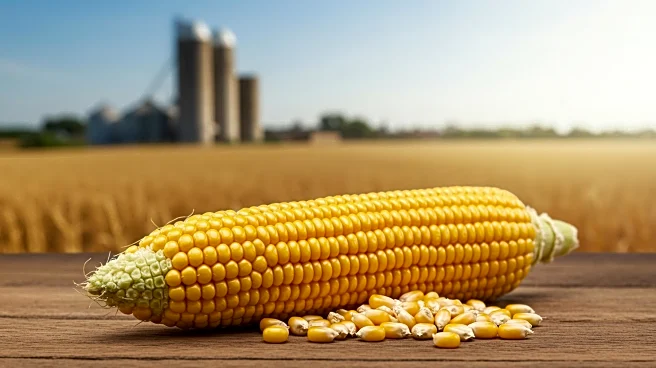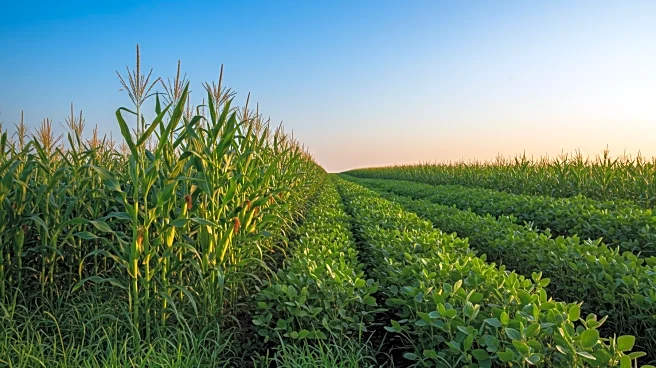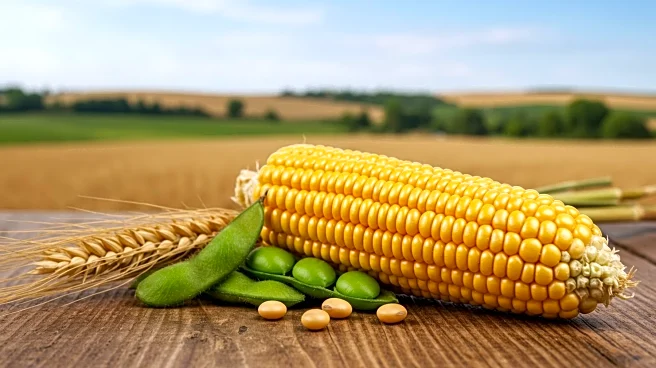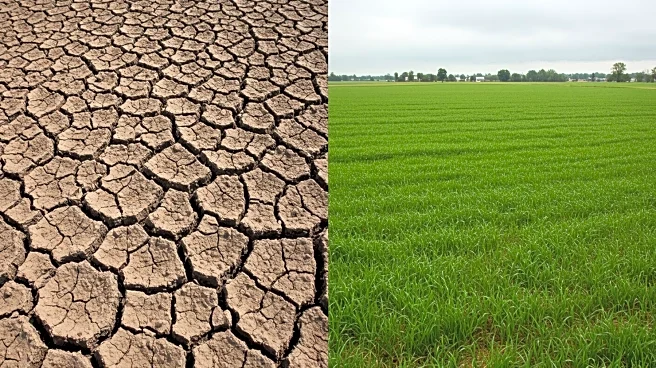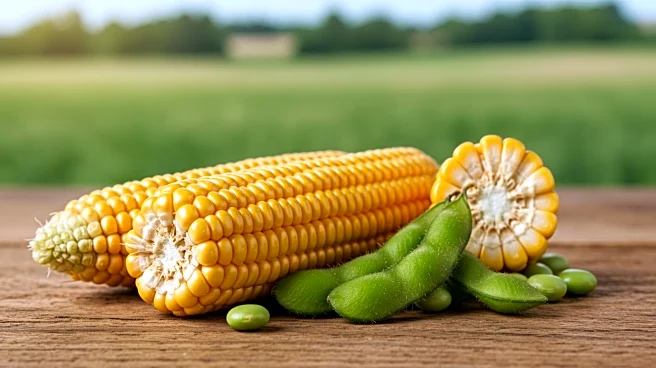Rapid Read • 8 min read
The U.S. Department of Agriculture (USDA) has reported a decline in corn futures in overnight trading, influenced by favorable crop conditions observed during the ProFarmer Crop Tour. The tour, which assesses corn and soybean crops across the Midwest, revealed promising yield forecasts in states like South Dakota and Ohio. In South Dakota, corn yields are projected at 174.18 bushels per acre, marking an 11% increase from the previous year. Similarly, Ohio's corn yields are expected to rise to 185.69 bushels per acre. Despite these positive projections, corn futures for December delivery fell by 4 cents to $4.02½ a bushel on the Chicago Board of Trade. Soybean futures also experienced a slight decline, while wheat futures dropped as the winter harvest nears completion.
AD
The decline in corn futures, despite favorable crop conditions, highlights the complex dynamics of agricultural markets. While increased yields suggest a robust harvest, the drop in futures prices may reflect broader market uncertainties or oversupply concerns. This situation impacts farmers' profitability, as lower futures prices can reduce income from crop sales. Additionally, the USDA's report on export inspections shows a decrease in grain and soybean assessments for overseas delivery, which could further influence market prices and trade dynamics. The agricultural sector, a critical component of the U.S. economy, faces challenges in balancing production with market demand, affecting stakeholders from farmers to exporters.
As the harvest progresses, stakeholders will closely monitor market trends and weather conditions, which continue to pose challenges with extreme heat warnings across the Midwest. The USDA's ongoing assessments and reports will provide crucial insights into crop conditions and export opportunities. Farmers and traders may need to adjust strategies based on these developments, while policymakers might consider interventions to support the agricultural sector amid fluctuating market conditions. The impact of weather patterns and international trade dynamics will remain key factors influencing future market movements.
The agricultural sector's reliance on favorable weather conditions underscores the vulnerability of crop production to climate change. As extreme weather events become more frequent, the industry may need to adopt more resilient farming practices and technologies. Additionally, the interplay between domestic production and global trade highlights the importance of maintaining competitive export strategies to ensure market stability. These factors could drive long-term shifts in agricultural policy and innovation, aiming to enhance sustainability and economic resilience.
AD
More Stories You Might Enjoy



